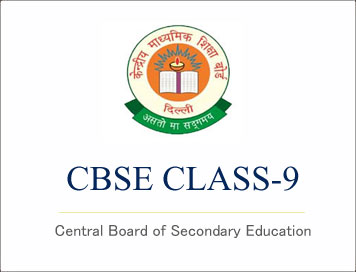CBSE Class-9 Syllabus 2019-20 (Computer Applications)
Disclaimer: This website is NOT associated with CBSE, for official website of CBSE visit - www.cbse.gov.in
CBSE Class-9 Syllabus 2019-20 (Computer Applications)
COMPUTER APPLICATIONS
CLASS IX
(Code No.165)
Effective from the session 2019-20
Learning Outcomes
1. Ability to familiarise with basics of computers.
2. Ability to navigate the file system.
3. Ability to create and edit documents, spread sheets, and presentations.
4. Ability to perform basic data manipulation using spread sheets and use Indian languages in documents.
5. Ability to send and receive emails, follow email etiquette, and communicate over the internet.
6. Ability to create and upload videos.
7. Ability to safely and correctly use websites, social networks, chat sites, and email.
Distribution of Marks and Periods
|
Unit No. |
Unit Name |
Marks |
| 1. | Basics of Information Technology |
5 |
| 2. | Cyber safety |
10 |
| 3. | Office Tools |
5 |
| 4. | Scratch/Python |
10 |
| 5. | Lab Exercises |
70 |
| Total |
100 |
4.1. Unit 1: Basics of Information Technology
- Familiarity with the basics of computers: design of computers, and overview of communication technologies
- Computer Systems: characteristics of a computer, components of a computer system – CPU, memory, storage devices and I/O devices
- Memory: primary (RAM and ROM) and secondary memory
- Storage devices: hard disk, CD ROM, DVD, pen/flash drive, memory stick
- I/O devices: keyboard, mouse, monitor, printer, scanner, web camera
- Types of software: system software (operating systems), application software, mobile applications
- Operating systems: kernel, device drivers, and file systems (very basic idea)
- Computer networking: wired/wireless communication, common protocols: Wi-Fi, Bluetooth, cloud computers (private/public)
- Multimedia: images, audio, video, animation
- Chat sites, and social networks.
4.2. Unit 2: Cyber-safety
- Safely browsing the web and using social networks: identity protection, proper usage of passwords, privacy, confidentiality of information, cyber stalking, reporting cybercrimes
- Safely accessing websites: viruses and malware
4.3. Unit 3: Office tools
- Introduction to a word processor: create and save a document.
- Edit and format text: text style (B, I, U), font type, font size, text colour, alignment of text. Format paragraphs with line and/or paragraph spacing. Add headers and footers, numbering pages, grammar and spell check utilities, subscript and superscript, insert symbols, use print preview, and print a document.
- Insert pictures, change the page setting, add bullets and numbering, borders and shading, and insert tables – insert/delete rows and columns, merge and split cells.
- Use auto-format, track changes, review comments, use of drawing tools, shapes and mathematical symbols.
- Presentation tool: understand the concept of slide shows, basic elements of a slide, different types of slide layouts, create and save a presentation, and learn about the different views of a slide set – normal view, slide sorter view and hand-outs.
- Edit and format a slide: add titles, subtitles, text, background, and watermark, headers and footers, and slide numbers.
- Insert pictures from files, create animations, add sound effects, and rehearse timings.
- Spreadsheets: concept of a worksheet and a workbook, create and save a worksheet.
- Working with a spreadsheet: enter numbers, text, date/time, series using auto fill; edit and format a worksheet including changing the colour, size, font, alignment of text; insert and delete cells, rows and columns. Enter a formula using the operators (+,-,*, /), refer to cells, and print a worksheet.
- Use simple statistical functions: SUM (), AVERAGE (), MAX (), MIN (), IF () (without compound statements); embed charts of various types: line, pie, scatter, bar and area in a worksheet.
Click Here To Download Full Syllabus
Courtesy: CBSE
